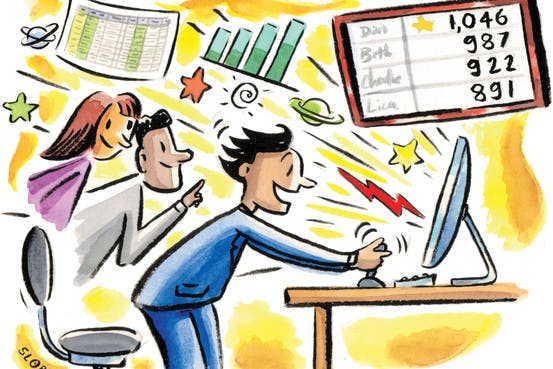I love the fact that enterprise software is becoming more like consumer software every day — more usable, more accessible, more obvious and discoverable functionality, more mobile/social/global, and with much more of the look and feel of the consumer Web sites I’ve come to know and love.
And for all of us who love contests with prizes or just getting a visible expression of what we’ve accomplished, gamification has added important new capabilities to the quest for ever more useful and business outcomes-driving enterprise software. So far, so good.
But of late I’ve discovered an entirely new trend in the design of enterprise software that isn’t so good. I’ve called it mechugasification, from the Yiddish meshugas, of which there are many Anglicized spellings but which is universally understood to mean madness, insanity, or craze.
The Mechugasification of HR tech
Mechugasification, like so many complex architectural concepts, is easier for most of us to understand experientially than via a learned dissertation. Basically, you know it when you see it.
I saw some of it (no names yet) at our recently concluded #HRTechConf – and there’s a lot more waiting in the wings of the HRM enterprise software community. An example will put you in the picture.
Video interviewing is a great idea whose time has clearly come. Combining the consumer experience of YouTube with the features needed to insert such interviewing techniques into rigorous staffing processes (tracking, confirmation, secured routing, etc.) makes very good sense. Now combine this with robust employee referral processes, to include some which have been gamified to engage employees in the “hunt” for great new workers as well as teaching them about the ripple effects of a bad hire, and you’re really cooking. But push the envelope by including tools within the video production application that allow applicants to put their best foot forward — taller, thinner, lighter, darker, clearer skin, or juicier lips — and you’ve got mechugasification.
Would you like another example? Consider the burst of investment in HRM analytics.
Consumerization makes even the most arcane algorithms, e.g. probability and severity of flight risk calculated on the basis of the relevant 20-30 factors, each of which requires different scales and a little linear regression in order to come up with something meaningful, and then make them accessible for ”normal” people by displaying them with simplified graphics, e.g. radar diagrams which consolidate the relevant factors into 5-7 composite dimensions.
Just because it’s possible doesn’t make it good
Gamification might be used to help reduce the flight risk of those in key roles — assuming we can’t just pay them enough to achieve the needed level of engagement or that their personal motivation profiles value other important aspects of their work beyond cash on the barrel head (does anyone still use that expression) — by presenting a multi-level, prowess-demonstrating and badge-receiving collaboration environment for all of the researchers of a particular type.
But to get to mechugasification, we’d need to make sure that the badges awarded via this collaboration tool were repeatedly tweeted so that the entire Twitter stream was clogged with this, thus bringing all of us the “fail whale.” Get my drift?
The moral of my story is a simple one. Just because something is possible, that doesn’t make it a good idea. And just because our HRM enterprise software and related tools are increasingly — and usefully – being consumerized and gamified doesn’t mean that we should tolerate them being mechugasified.
Even as I’m “playing” with new learning and performance management tools, even as I’m experimenting with the latest in sourcing technology, and even while I’m finding my own footing in the “how should we spend our limited comp budget” game, my mechugas detector is on full alert.
Please don’t set it off.
This was originally published on Naomi Bloom’s technology blog, In Full Bloom.
